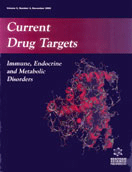Abstract
Tumor cells cannot grow as a mass above 2 to 3 mm3 because diffusion is insufficient for oxygen and glucose requirements, unless the tumor induces a blood supply. This mechanism of induction of a new blood supply from pre-existing vascular bed is called angiogenesis. Furthermore, tumor invasiveness and metastasis require neovascularization. In fact, recent published studies suggest that acquisition of the angiogenic phenotype is a common pathway for tumor progression and neovascularization is linked with other molecular steps leading to tumor progression. Angiogenic process is a complex multi-step cascade under the control of positive and negative soluble factors. A paracrine interaction occurs between tumor and endothelial cells. Angiogenesis involves: endothelial cell proliferation, migration and tubule formation with associated changes in the extra-cellular matrix, allowing subsequent new vessel growth toward the tumor. Each of the above steps may represent a target for antiangiogenic therapy. Antiangiogenesis is to be distinguished from direct targeting and destruction of tumor vasculature (vascular targeting). Inhibition of angiogenesis represents one of the more promising, new approaches, to anticancer treatment and its already in early clinical trials. This review takes into consideration: (i) the biological mechanism underlining angiogenesis process; (ii) the method to assess tumor angiogenesis activity; (iii) inhibition of angiogenesis as an anticancer therapy; (iv) the methodology for the clinical development of angiogenesis inhibitors, that should be considered biological response modifiers; (v) some angiogenesis antagonists that are in development and leader compounds that are under clinical trial.
 3
3


















